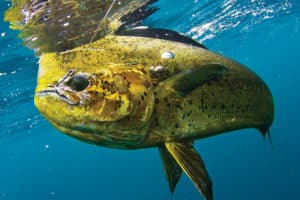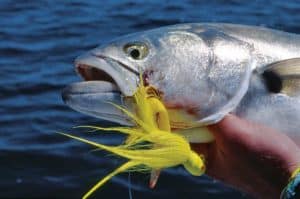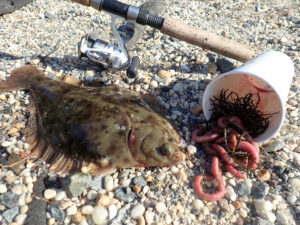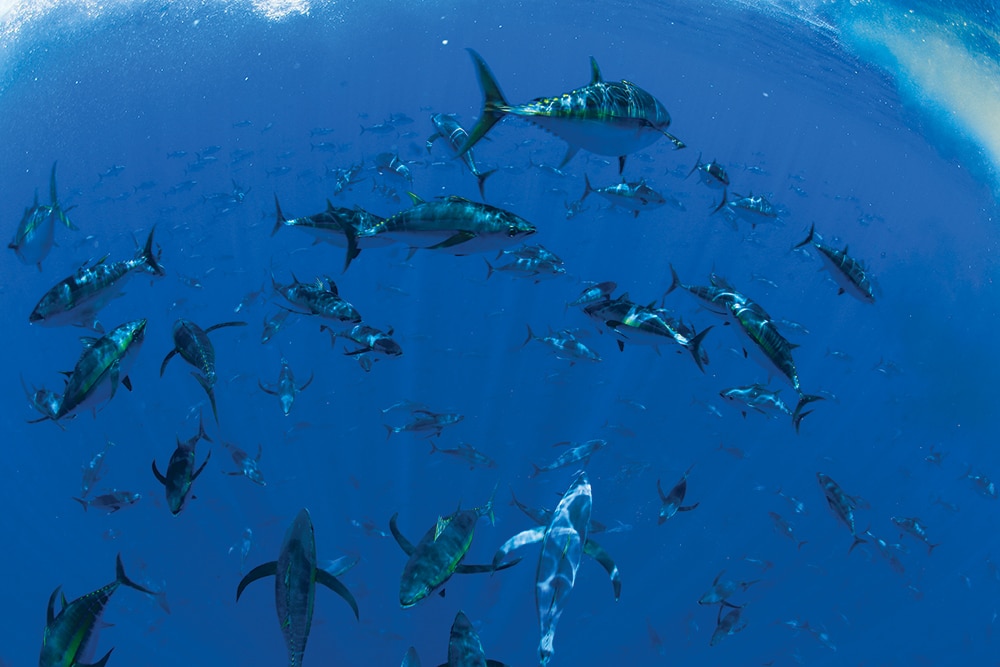
Not all tuna frenzies are created equal — heck, most of the time they’re happening hundreds of feet below the swells! That’s when it’s time to tie on the iron, metal or jigs. Whatever you call ’em, there’s no deadlier lure than metal jigs for midwater tuna.
The wide-ranging movements of many species — especially bluefin and yellowfin — allow U.S. anglers in the Atlantic, Pacific and Gulf of Mexico to target them during different times of the year. I spoke with two veteran anglers on different sides of the country to learn their top jigging techniques for waters as deep as a football field.
“The real deep stuff — as practiced in the South Pacific (300-plus feet) — is not common for tuna on the U.S. West Coast,” says Steve Carson, director of Penn Fishing University, “but lots of action is regularly had in 100 to 250 feet of water.”
Find the Tuna Fishing Grounds
“Our tuna fishery off Massachusetts and Rhode Island is predominantly based on bait dispersion,” says Capt. Dom Petrarca, of Coastal Charters Sportfishing, “but they’ll hang anywhere near rips, upwellings, good current or bottom structure that help congregate bait.”
Like land mammals, the tuna have preferred “game trails” that they are known to frequent during the prime season, says Petrarca. Good indicators of tuna are whales, birds, porpoise schools or even temperature breaks. The deepwater canyons off the East Coast provide additional structure created by the continental shelf and its drop-offs.
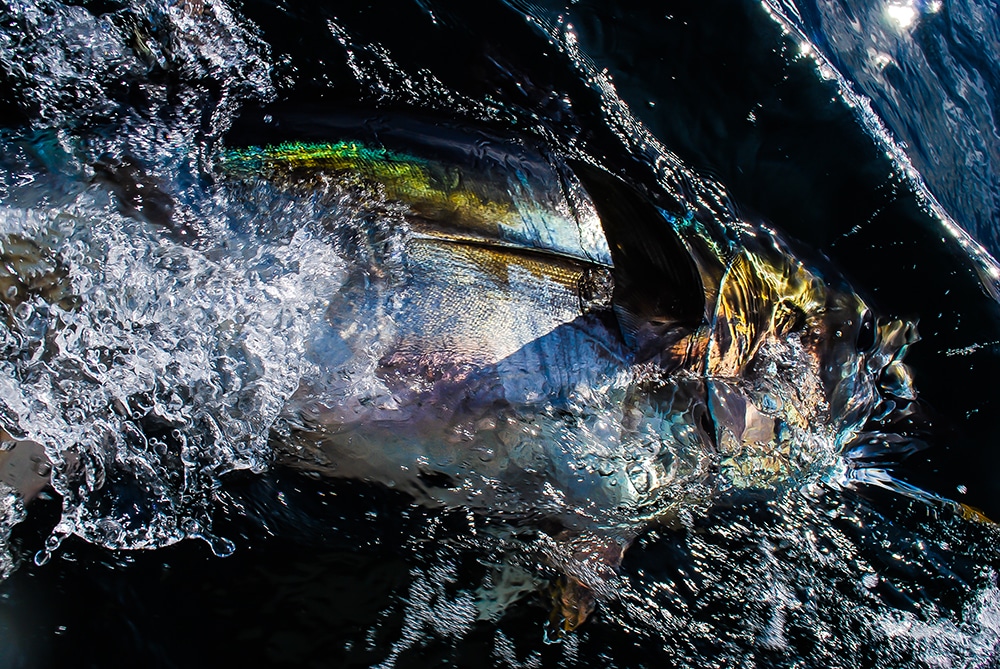
Sand eel schools near the bottom or in midwater really attract the bluefin, says Petrarca, as well as in fall, when the herring schools thicken. The tuna sometimes stack in dense schools, but most often Petrarca spots singles or packs of fish in tight formations herding bait on his sounder screen.
On the West Coast, the structure is different, but tuna react the same.
Yellowfin tuna are most often caught near floating kelp paddies, or in association with porpoises,” says Carson, who fishes regularly from Santa Cruz to San Diego off California. “Albacore and bluefin tuna are frequently temperature-break oriented. And when I fish in northern Baja, the large tuna pens holding bluefin regularly attract free-swimming tuna on the outside [of the nets].”
The bluefin tuna caught near the tuna pens are not escapees, but instead are attracted to the pens as structure and a food source. The tuna inside the pens are fattened up with sardines off the coast of the Baja peninsula, and then shipped to Japanese markets. But outside the pens, the free-swimming fish are prime targets for jig anglers.
Tackle Setups for Jig-Fishing Tuna
Jig-fishing is a matter of locating the areas where tuna are feeding deep, and then using sonar to locate them in the water column. Depending on the size and species of tuna, Carson and Petrarca recommend specific tackle setups to handle the iron-willed game fish.
“Reels have come a long way in a short time, and conventionals from many companies are suited to this fishery,” says Petrarca. He prefers conventional reels paired with short, lightweight rods rated for 350 to 500 grams (12 to 18 ounces).
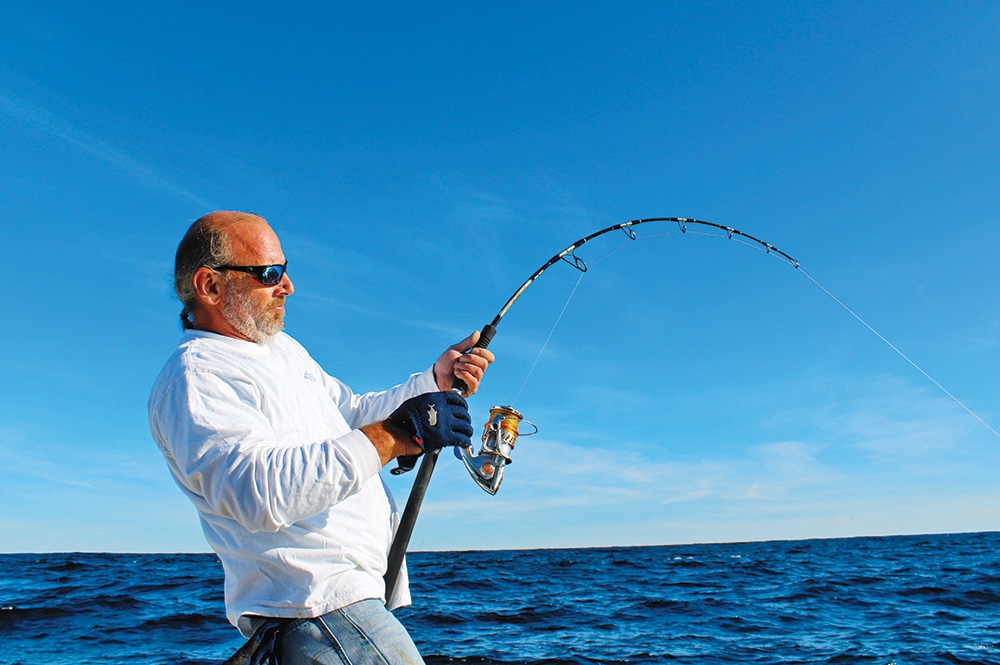
“Three spinners I have seen so far that can handle the pressures and drag needed for large tuna (more than 400 pounds) are the Shimano Stella, Daiwa Saltiga Dogfight series, and the Van Staal VS 275,” says Petrarca.
For albacore tuna, Carson uses a Penn Fathom FTH25N star-drag reel, loaded with a 30-pound mono top shot, paired to a 7- or 8-foot fast-taper rod rated for 20- to 40-pound line.
“Yellowfin over 100 or even 200 pounds require a two-speed reel like a Penn Torque 40,” Carson says. Bump up to a Penn 50vsx, or Shimano Talica II 25 or 50, with a 100- to 130-pound mono top shot for fish over 200 pounds.
Most tuna jigging on the West Coast is done with 100-yard top shots of fluoro or mono — it is more conducive to casting and easier for crews to deal with tangles. Petrarca, on the East Coast, uses a wind-on fluorocarbon jigging leader measuring about 20 to 25 feet, paired with braided main line. Depending on your fishing style, both rigs are deadly effective.
“I spool all my reels with 100-pound Jerry Brown Hollow Core metered line, with a spliced end loop for a loop-to-loop connection to the leader,” says Petrarca. “Terminal tackle for me is simple. I tie on a Spro power swivel (No. 2 or 4) attached to a Spro power split ring (No. 7 or 8) to switch out jigs easily.”
How to Rig Your Jig
Petrarca’s jig is attached to the split ring, and then a solid ring with an assist cord and 8/0- to 13/0-size jigging hooks are also attached to the split ring. That way, the fish is fought off only the assist cord, not the jig itself.
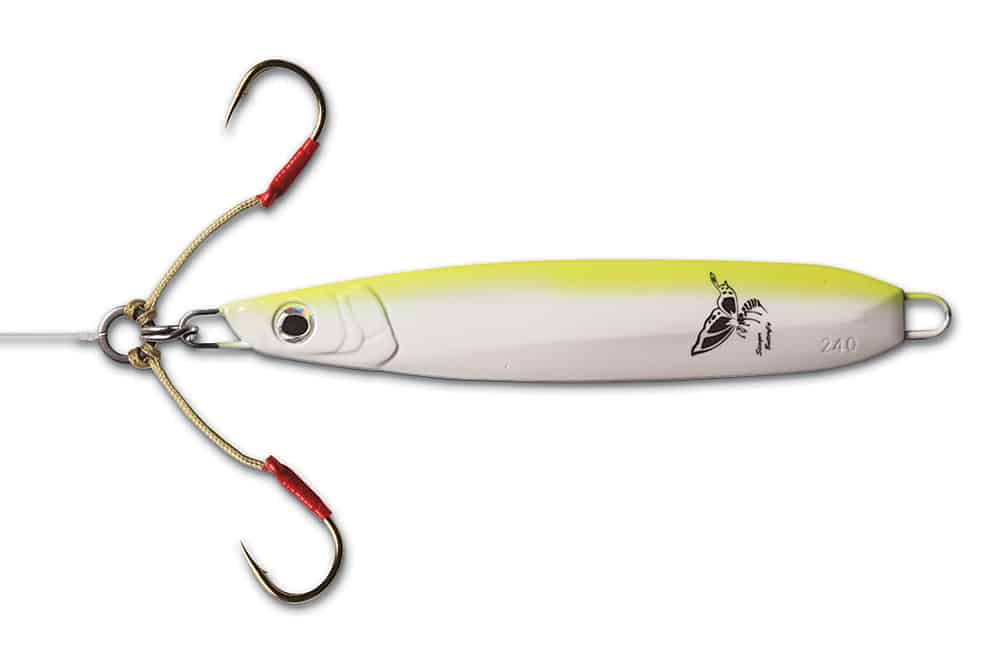
There are numerous jig manufacturers to choose from when it comes to picking a tantalizing tuna jig, but Carson prefers Williamson Herring, Tady or Sumo C2 jigs, ranging from 3 to 7 ounces, depending on the size of the tuna.
“For fish mostly under 30 pounds, I’ll use a treble hook,” Carson says, “but fish over 30 pounds get a single hook.”
Jig color does seem to matter some days, so Petrarca keeps different greens, blues, pinks and metallics handy. “I like the Deep Force series from Point Jude Lures, a local favorite, in sizes 200, 260 and 310 grams,” says Petrarca. “Jig-caught fish are very easy to release if you don’t plan to keep a couple — it’s just a small hook point in the corner of the mouth that allows for easy hook extractions.”
Reels Trending Upward
Tackle manufacturers embrace the need for compact, lightweight reels that tuna anglers increasingly use. “The gear has really come a long way in such a short time,” says Petrarca, “with plenty of stopping power and capacity for modern braids.”
The lines and rods are stronger, lighter and thinner. “The advancements have allowed the size of the tuna anglers target to increase,” says Petrarca. “The new gear can handle fish well over 200 to 300 pounds.”
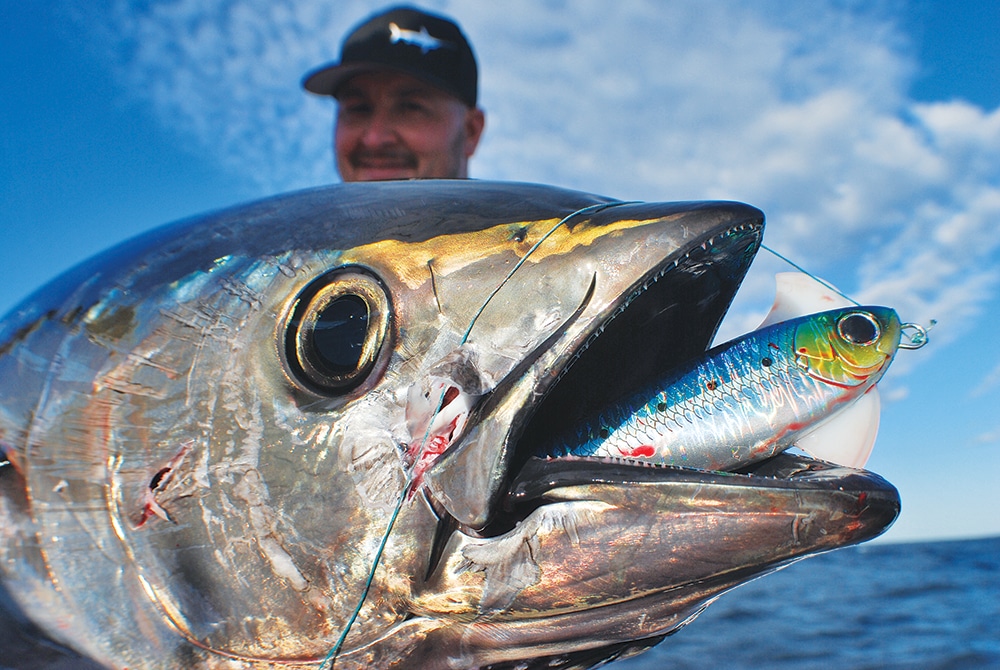
Carson has seen firsthand the increase in use of lightweight two-speed reels, even if they aren’t completely necessary. One of those reels would have helped an angler who hooked a 275-pound bluefin on cod gear, says Petrarca. He had an 8-foot G-Loomis rod and Daiwa Saltiga 40 reel, lined with 65-pound braid.
“We fought that fish for more than four hours into the late afternoon in building seas,” he says, “and ended up landing it with the help of an angler from another boat. All of our anglers were dead tired.”
Jigging Flash and Style
Jigging for tuna isn’t rocket science, though many anglers have definitely experimented to figure out their favorite techniques. Sometimes it’s this easy: “Drop the jig 150 to 200 feet, and crank it back at warp speed,” says Carson. “Good luck trying to outrun your jig from a speeding tuna.”
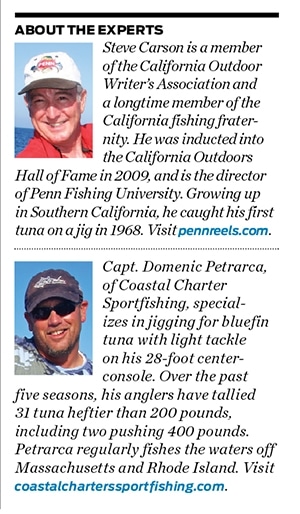
Petrarca slows it down some, though he admits “speed” jigging is dynamite at times.
“My best technique for bluefin is a steady, rhythmic style, with pauses and speed variations,” says Petrarca. “With yellowfin, vertical jigging at a given depth is a great method in the Northeast canyons at night while chunking.
“The key is to get the jig in the ‘hot zone,’ where the fish are predominantly holding, and work it at that depth as long as possible. This involves a lot of work when the bluefin get near the bottom, as the scope of the line will force a retrieve all the way to the boat and another drop-back.”
One of Carson’s tricks is to use a glow jig while the boat is drifting in the early gray light of the morning dawn. “Drop the jig down 200 feet or more, and you’ll often get hit on the sink,” says Carson. “If not, crank it back at a medium-fast speed and hold on.”

